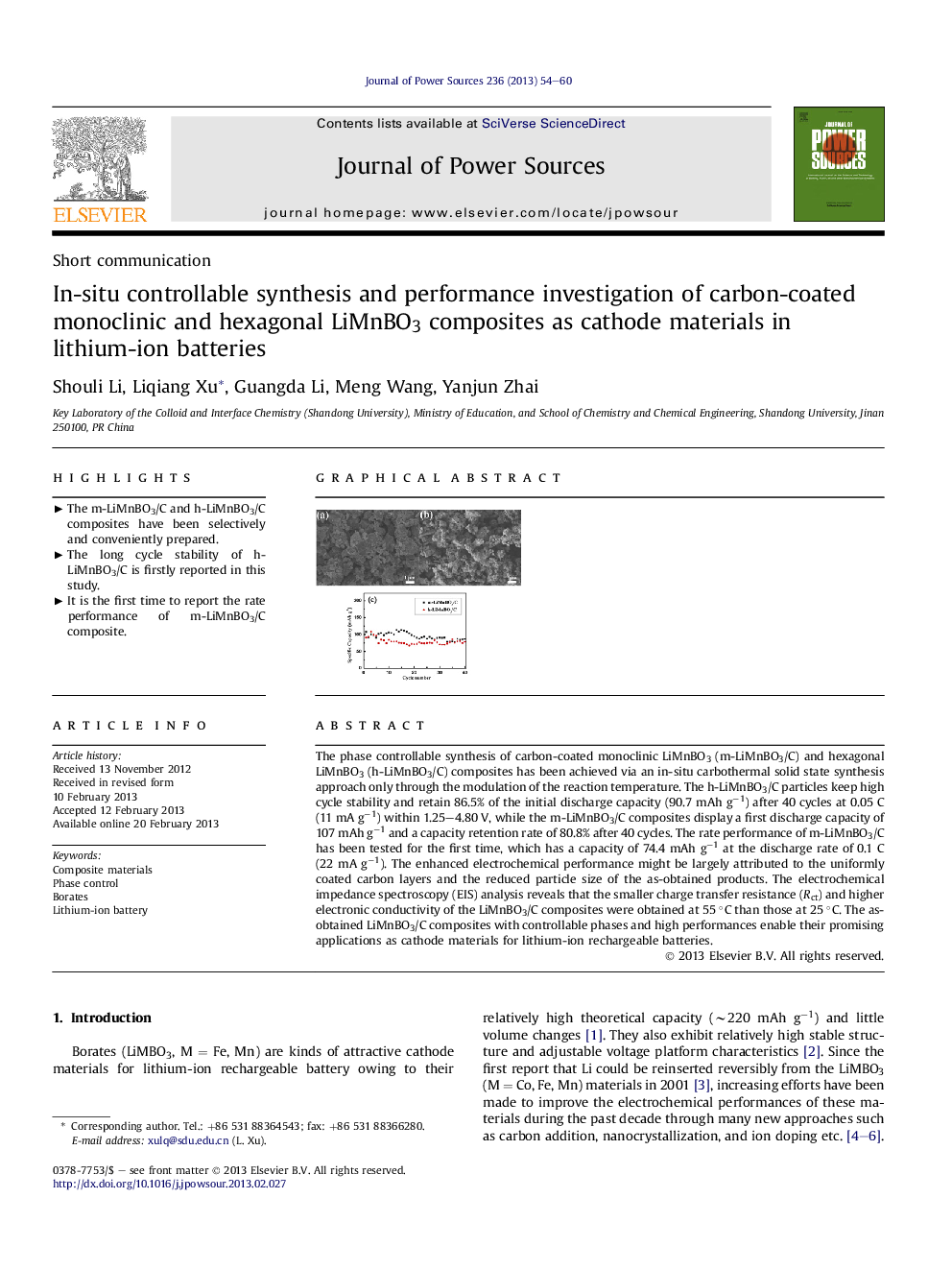| کد مقاله | کد نشریه | سال انتشار | مقاله انگلیسی | نسخه تمام متن |
|---|---|---|---|---|
| 1287805 | 1497996 | 2013 | 7 صفحه PDF | دانلود رایگان |

The phase controllable synthesis of carbon-coated monoclinic LiMnBO3 (m-LiMnBO3/C) and hexagonal LiMnBO3 (h-LiMnBO3/C) composites has been achieved via an in-situ carbothermal solid state synthesis approach only through the modulation of the reaction temperature. The h-LiMnBO3/C particles keep high cycle stability and retain 86.5% of the initial discharge capacity (90.7 mAh g−1) after 40 cycles at 0.05 C (11 mA g−1) within 1.25–4.80 V, while the m-LiMnBO3/C composites display a first discharge capacity of 107 mAh g−1 and a capacity retention rate of 80.8% after 40 cycles. The rate performance of m-LiMnBO3/C has been tested for the first time, which has a capacity of 74.4 mAh g−1 at the discharge rate of 0.1 C (22 mA g−1). The enhanced electrochemical performance might be largely attributed to the uniformly coated carbon layers and the reduced particle size of the as-obtained products. The electrochemical impedance spectroscopy (EIS) analysis reveals that the smaller charge transfer resistance (Rct) and higher electronic conductivity of the LiMnBO3/C composites were obtained at 55 °C than those at 25 °C. The as-obtained LiMnBO3/C composites with controllable phases and high performances enable their promising applications as cathode materials for lithium-ion rechargeable batteries.
Carbon-coated LiMnBO3 composites with monoclinic and hexagonal phases have been controllable prepared through a facile one-pot approach in the temperature range of 500–750 °C. The initial discharge capacity of m-LiMnBO3/C was 107 mAh g−1 at 11 mA g−1 within the window of 1.25–4.80 V, and 74.4 mAh g−1 could be retained if the current density was increased to 22 mA g−1. The initial discharge capacity of h-LiMnBO3/C particles was 90.7 mAh g−1, and its discharge capacity retention ratio was 86.5% after 40 cycles. The electrochemical impedance spectroscopy results of the products illustrated the better electrochemical performance of m-LiMnBO3/C than that of h-LiMnBO3/C at 55 °C. The overall results reveal that these two kinds of materials can be used as promising cathode materials for lithium-ion rechargeable batteries.Figure optionsDownload as PowerPoint slideHighlights
► The m-LiMnBO3/C and h-LiMnBO3/C composites have been selectively and conveniently prepared.
► The long cycle stability of h-LiMnBO3/C is firstly reported in this study.
► It is the first time to report the rate performance of m-LiMnBO3/C composite.
Journal: Journal of Power Sources - Volume 236, 15 August 2013, Pages 54–60